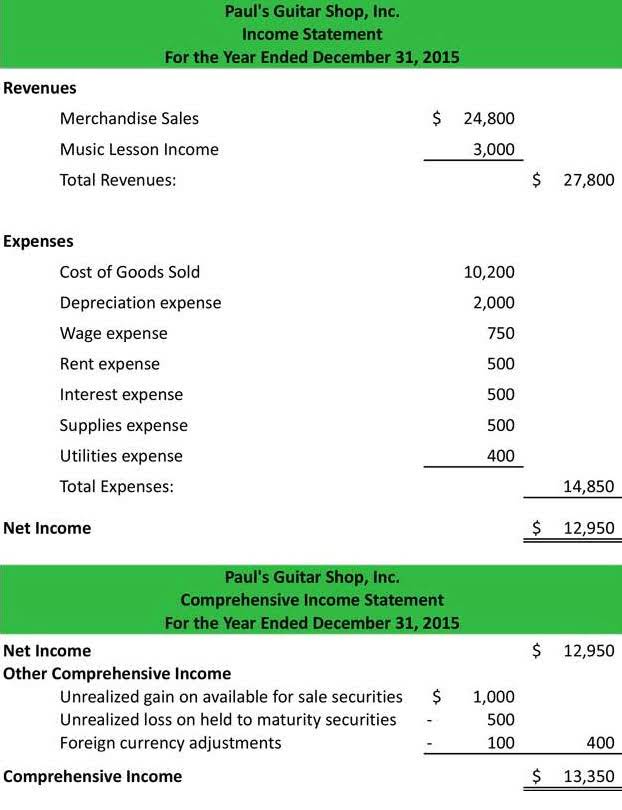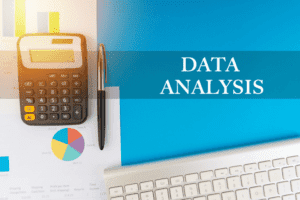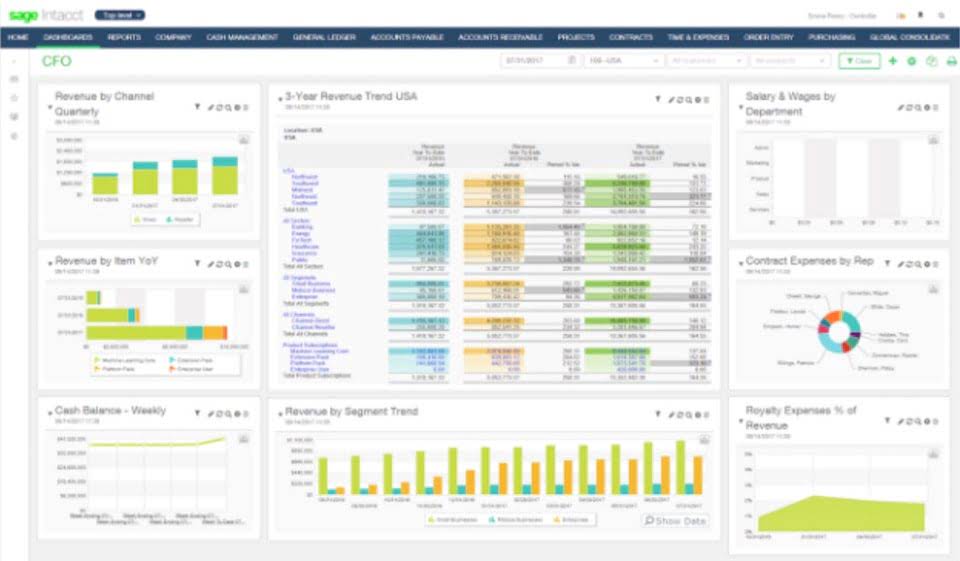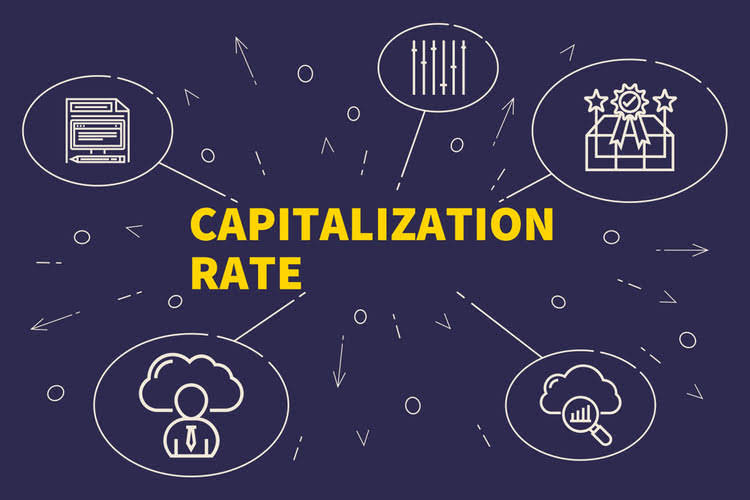Wiggs CPA Tax & Accounting Chicago Illinois

Quarterly projections and entity-level strategies to reduce tax exposure before liabilities materialize. As a top 200 firm, we base our advice on where you want to be, not merely on where you’ve been. Our advisors focus on your future—driving your business to be more profitable and more successful. Learn more about how Xamin, a subsidiary of Mowery & Schoenfeld, can help protect your company and give you peace of mind—from cybersecurity assessments to complete managed IT services.
It’s about timefor brighter futures
The company handles tax planning, accounting, and CFO services and offers consultancy solutions to educate its clients in financial management and budgeting. Acumen Accounting & Tax Services is a leading accounting firm serving Hinsdale, IL and its neighboring counties. Acumen Accounting & Tax Services offers personalized and efficient services to small and mid-sized businesses, guaranteeing the best quality service to their clients. It serves small businesses and individuals, as well as customers in the construction, technology, and real estate industries. Its tax and accounting services include business incorporation, outsourced accounting, tax preparation, tax planning, and payroll services. John Joseph Griffin, the owner of the company, became a CPA in 2001 and established his firm in 2010.

Best Accountants in Chicago, IL
- They also handle personal and business tax preparation, non-profit audits, and business consultation.
- A local accounting firm can handle day-to-day ledgers for a fraction of the cost of a full-time hire, letting owners dedicate effort to growth initiatives rather than data entry.
- If QuickBooks is your preferred accounting software, STE can help set up and manage your QuickBooks, and you can choose our “STE on Demand” option in which we will create a remote login to your computer.
- We’ll establish the right chart of accounts, implement sound protocols, and provide cash flow leadership that unleashes your potential.
- BM Accounting and Tax, Inc. is a premier accounting firm offering bookkeeping and tax services to small businesses in Chicago, IL and its surrounding areas.
My expertise in both QuickBooks Online and Desktop ensures that I can handle all your accounting needs, from setup to daily management and detailed reporting. Are you looking for clear, organized financial management that can help your business grow? I’m here to turn your financial chaos into a structured success, enabling informed decisions and supporting your business objectives with small business accounting solutions. Contact me today and let’s make your business finances a cornerstone of your success. Pasquesi Partners LLC is an accounting firm that specializes in assisting with the growth of start-ups and small businesses in Chicago, IL and its neighboring communities.
- Whether your business is large or small, our Chicago, IL accounting firm always supplies personalized support and reliable financial advice you can count on.
- Its principal accountant, Gaurangkumas Patel, specializes in forensic accounting.
- A bookkeeper can help your business make sure the funds that customers owe your company for products or services have been properly invoiced and processed.
- They provide accounting and tax services to both individuals and businesses.
- A bookkeeper maintains daily financial records, ensuring data accuracy and compliance year-round, while a tax preparer specializes in filing returns, optimizing credits, and advising on tax-law changes.
J.S. Richter, Ltd. Certified Public Accountants
- Doing your own books or having an amateur usually creates more problems than it solves.
- Put this robust software to work for you with QuickBooks setup and training.
- We provide you with timely, expert insights into your finances so that you can make informed decisions when it matters most.
- We serve construction companies throughout their project phases so they can finish the job and get paid.
- Our certified public accountants and consultants offer expert services that are tailored to your unique needs.
- Ivan P. Ivarson, RTRP and other tax preparers located in Chicago IL will help you with tax preparation, tax planning, bookkeeping, estate and trust taxes, and so much more.
As your trusted bookkeeping partner in Chicago, I specialize in QuickBooks training, comprehensive payroll services, and strategic financial oversight designed to empower your small business. Ready to lift the burden of bookkeeping and focus on what truly unearned revenue matters in your business? Secure your spot now—limited availability for personalized bookkeeping solutions that truly transform your financial management. NSKT Global is a consulting firm that addresses the financial management needs of Chicago businesses. Its certified public accountants reconcile bank statements, customer ledgers, and vendor payments for companies in the healthcare, information technology, manufacturing, and retail sectors.
Get in touch with Federated Tax Service, Inc. for professional bookkeeping and tax services across Chicagoland.

With this service, your business can better track finances and avoid unpleasant financial surprises. Get the financial statements you need monthly to run your business effectively. These documents include a monthly statement, a balance sheet, a cash flow statement, customized reports, and more. Building an estate plan ensures that your wishes are carried out when the time comes. Our accountants can help with your estate planning as we have an extensive knowledge of estate taxes and can help you make moves that minimize your taxes and maximize your estate’s worth. Business tax returns, tax reduction planning, bookkeeping, payroll and more.

Top 10 Illinois CPA Firm

South Loop helps small businesses and professional individuals with complex tax laws, Remote Bookkeeping IRS resolution, and accounting processes. Businesses can avail themselves of the firm’s services in company formation, business tax, bookkeeping, and valuation. It also offers forensic accounting services to spouses going through a divorce to identify assets in a fair settlement.
Estimating Your Retirement Income Needs
Its founder and certified public accountant, Jessica Reed, worked as a controller for an eSourcing and nonprofit firm before opening Reed Accounting. The company originally focused on individual tax returns, but it now handles the tax-related concerns of small businesses and sole proprietors. In bookkeeping services chicago addition, the team offers bookkeeping services on a monthly, quarterly, or annual basis.
How to Calculate After Tax Salvage Value: A Complete Guide

When calculating depreciation, an asset’s salvage value is subtracted from its initial cost to determine total depreciation over the asset’s useful life. From there, accountants have several options to calculate each year’s depreciation. As the name suggests, the salvage value of assets refers to their final value after they have depreciated over time. Also known as scrap value or residual value, it’s important for businesses to calculate the value to find the selling price of old assets. The units of production method is based on an asset’s usage, activity, or units of goods produced. Therefore, depreciation would be higher in periods of high usage and lower in periods of low usage.
Adopt Flexible Estimation Methods
- By incorporating these insights and providing examples, we can gain a better understanding of salvage value and its significance in assessing the value of capital assets.
- It is a method of recognizing the decline in value and the wear and tear of an asset over time.
- We have been given the asset’s original price in this example, i.e., $1 million.
- When calculating depreciation, an asset’s salvage value is subtracted from its initial cost to determine total depreciation over the asset’s useful life.
- Excel is a great tool for making rapid calculations with precision but errors can occur.
- It includes equal depreciation expenses each year throughout the entire useful life until the entire asset is depreciated to its salvage value.
The cost approach uses the costs for materials and labor needed to repair an asset, minus any depreciation. Accountants use salvage value to determine the most economical way to dispose of an asset, such as repairing and selling or scrapping it. In a real-world scenario, you may need to consider other factors to get a more realistic estimate of the car’s resale value. Therefore, the estimated salvage value of salvage value the machinery at the end of 7 years is $18,500.

Salvage Value Depreciation Equation
This method assumes that the salvage value is a percentage of the asset’s original cost. To calculate the salvage value using this method, multiply the asset’s original cost by the salvage value percentage. With AI-powered systems, companies can automate asset tracking, predict wear and tear, and estimate end-of-life value more precisely. These tools analyze historical data, usage patterns, and market conditions to improve salvage value forecasts—helping businesses plan better for asset disposal or resale. With a large number of manufacturing businesses relying on their machinery for sustained productivity, it is imperative to keep assessing the equipment they own.
Get the Excel Template!
This means that the condition and age of the asset can greatly impact its salvage value. Different types of assets have unique characteristics that affect their salvage value. Assets that incorporate innovative features or technologies may retain higher salvage values Remote Bookkeeping if they remain relevant in the market. Technological obsolescence is a significant factor influencing salvage value. Rapid technological advancements can render assets obsolete quickly, reducing their salvage value. Businesses need to account for these costs in their salvage value estimates to ensure accuracy and compliance with regulations.

Straight-Line Method

Finally, the salvage value shares the maximum comparison with the scrap value. There might be a minor nuisance as the scrap value may assume that the good isn’t being sold, but instead, it is just converted to raw materials. For instance, a business may decide that it wants to scrap a fleet of vehicles of the company for $1,000.

What is the difference between salvage value and market value?
Below is a break down of subject weightings in the FMVA® financial analyst program. As you can see there is a heavy focus on financial modeling, finance, Excel, business valuation, budgeting/forecasting, PowerPoint presentations, accounting and business strategy. For example, a delivery company might look cash flow at the value of its old delivery trucks for guidance. Companies consider the matching principle when they guess how much an item will lose value and what it might still be worth (salvage value).
Tax & Accounting Services West Lafayette, Indiana

They guide accountants in managing conflicts of interest, maintaining confidentiality, and undertaking their duties responsibly. Accounting educators are encouraged to develop experiential learning exercises that directly involve students in changing their work environment and enhancing workplace culture. Along these lines, seasoned professionals should be invited into the classroom to share their experiences with students so they can learn about role models, an essential characteristic of moral courage. Several accounting educators have started to research how to integrate the GVV approach into accounting ethics education. It is too soon to know how many accounting programs use such an approach and additional research is needed in this area.
- In particular, it involves students directly in the decision-making process by expressing their values when ethical conflicts exist.
- Regulatory and professional standards play a crucial role in maintaining the integrity and reliability of advanced accounting practices.
- The goal of ethics education regarding practical wisdom is to develop moral courage through experiential learning exercises.
- Organizations can support whistleblowing by establishing clear reporting channels and fostering a culture of openness.
- HighRadius stands out as a challenger by delivering practical, results-driven AI for Record-to-Report (R2R) processes.
- Ethical practices in accounting involve adhering to principles such as honesty, transparency, and accountability.
What is the main problem of accounting ethics?
- These scandals highlight the importance of strict adherence to ethical standards and the need for robust oversight mechanisms.
- Taken together, the California requirement is consistent with the sandwich approach advocated by Armstrong.
- Shaub describes an accounting ethics course that seeks to help students develop practical wisdom by voicing their opinions and practicing them in the classroom primarily through case studies.
- Build connections with other professionals in diverse industries that will stay with you throughout your career.
- Organizational policies often provide guidance on handling complex situations, including protocols for consulting senior management or ethics committees.
- Ethical guidelines ensure that accountants maintain integrity, transparency, and accuracy in their work.
- The statements are then scored and a DIT value determined (James Rest, Development in Judging Moral Issues, University of Minnesota Press, 1979).
They help maintain public confidence and support the proper functioning of financial markets. Key ethical guidelines and standards in accounting include Generally Accepted Accounting Principles (GAAP), International Financial Reporting Standards (IFRS), and the AICPA Code of Professional Conduct. A lack of integrity in accounting can lead to financial scandals, such Accounts Payable Management as fraudulent reporting and embezzlement. This can result in significant financial losses, legal consequences, and a loss of public trust. While adhering to accounting principles is vital for ethical accounting, relying solely on manual processes, from reconciliation to financial closure, often results in inefficiencies, errors, and potentially fraudulent activities.
Vendor Code of Conduct
By providing regular workshops and seminars, organizations can enhance their employees’ understanding of ethical dilemmas and equip them with the necessary skills to make ethical decisions. Consequently, any undisclosed arrangement or subtle promise of future business engagements contradicts ethical standards in accounting. Upholding ethical integrity mandates that auditors maintain complete impartiality and independence in their assessments, devoid of any undisclosed influences or inducements.
Strategies for Promoting Ethical Practices

It requires professionals to act honestly, transparently, and in accordance with moral and ethical standards, regardless of external pressures or personal interests. Robust internal controls are essential for preventing fraud and ensuring accurate financial reporting. By implementing segregation of duties, regular audits, and thorough review processes, organizations can minimize the risk of unethical behavior and detect any irregularities early on. Established to ensure the integrity and trustworthiness of the profession, ethical principles in accounting serve as Online Accounting guiding beacons.

Cash Application Management
By investigating complaints and imposing sanctions when necessary, they help maintain public trust in the accounting profession. These enforcement actions serve as a deterrent against unethical behavior, signaling that integrity is non-negotiable in the field of accounting. Integrity in accounting is fundamental to maintaining trust and transparency within the financial world.

Objectivity
By enhancing their professional competence, accountants integrity accounting can provide accurate and reliable financial information to stakeholders. A dedication to honesty and integrity discourages unethical behaviors, safeguarding the interests of the company, shareholders, and stakeholders from financial malpractice. Integrity requires accountants to be honest and straightforward in all professional relationships, ensuring information is free from bias and misrepresentation. The principle of full disclosure under GAAP mandates that all relevant financial information be included in reports, allowing stakeholders to make informed decisions. Integrity Taxes & Accounting’s goal is to provide help in reaching your financial goals along with tax planning, compliance and accounting. By entrusting your tax preparation and payroll management to Integrity Ag Business Services, you can have peace of mind knowing that your business is compliant with all tax laws and regulations.
Why is ethics training important in accounting firms?

Ethics plays a vital role in accounting by preventing harmful financial practices that could affect businesses negatively. Following ethical principles not only helps in short-term success but also supports long-term achievements, earning trust from consumers and meeting stakeholders’ needs. This principle calls for detailed documentation and precise recording of transactions in accordance with established accounting standards and principles. Any errors, inaccuracies, or omissions should be promptly corrected to maintain the reliability of financial statements. This principle also underscores the importance of integrity in record-keeping and discourages any manipulation or falsification of data. Accountants should continuously update their skills and knowledge to stay relevant and competent.
- Upholding ethical principles ensures that accountants make decisions that are in the best interest of all stakeholders, thereby maintaining the profession’s reputation.
- Adhering to accounting standards and ethical guidelines, supported by robust internal controls and a culture of ethical behavior, helps counteract such pressures.
- These principles ensure fairness, transparency, and accountability in financial reporting.
- By examining real-world scenarios, these studies provide valuable insights into how ethical dilemmas are navigated in complex financial environments.
- Exercising due diligence is critical when handling complex financial transactions or tax matters.
BY ROLE
The case study facilitates the exercise of moral will and moral skill by developing a script to voice values and positively influence ethical decision making. The Libby-Thorne model incorporates virtue concepts into Rest’s model through the last two phases—ethical intent and ethical action. What stands out the most are the recommendations to develop a sense of moral obligation and the abilities to deal with ethical conflicts or dilemmas.
yOUR bUSINESSaCCOUNTING pARTNERS
Embracing ethical principles in accounting holds the potential to elevate your organization’s integrity. By instilling a culture of ethical conduct in financial management, you lay the groundwork for trust, transparency in financial disclosures, improved employee morale, and sustainable financial growth. Whistleblowing is vital for uncovering unethical practices within organizations, ensuring transparency and accountability. Accountants are uniquely positioned to identify and report fraudulent activities, though doing so can involve personal and professional risks.
Full Charge Bookkeeper Job Description: Responsibilities, Skills, And Requirements

Their responsibilities encompass handling accounts payable, accounts receivable, payroll, billing, and invoicing. In addition to these core responsibilities, full charge bookkeepers often supervise junior accounting staff, such as accounts payable or payroll clerks. They provide training, assign tasks, and review the work of these team members to ensure accuracy and efficiency. In addition to technical skills, full charge bookkeepers need a multitude of soft skills to thrive in their roles. Strong organizational skills are crucial for managing large amounts of data and paperwork effectively. Excellent communication skills enable them to interact with different departments and sometimes directly with clients, explaining financial information in a clear and understandable manner.

Get experience

Strong organizational skills are essential for a full charge bookkeeper to effectively manage multiple financial tasks and deadlines. Bookkeepers are responsible for maintaining organized records, categorizing transactions, and managing financial documents. By having a system in place to https://www.bookstime.com/ organize and store financial information, bookkeepers can easily retrieve the necessary data when needed. This skill also enables bookkeepers to prioritize tasks, meet deadlines, and ensure that all financial obligations are fulfilled in a timely manner. Preparing financial statements is an important task that falls under your job responsibilities as a full charge bookkeeper. These statements, such as the income statement, balance sheet, and cash flow statement, provide a snapshot of the company’s financial performance and position.

Full Charge Bookkeeper FAQs
With decades of collective expertise and access to an unparalleled database of interview questions, we are dedicated to empowering job seekers. Our content meets real-time industry demands, ensuring readers receive timely, accurate, and actionable advice. We value our readers’ insights and encourage feedback, corrections, and questions to maintain the highest level of accuracy and relevance. Some small businesses have their accounting department or hire someone part-time just for payroll functions, so if that’s your only goal, it may be possible without getting a degree. However, education becomes essential when working as a full-charge bookkeeper at larger banks and financial service firms.

Working Conditions and Schedule of a Full Charge Bookkeeper
While efforts have been made to ensure the accuracy and reliability of the information presented, no guarantee is made regarding its completeness or suitability for any particular purpose. Hiring an in-house bookkeeper involves several costs beyond just their salary. Additional expenses include benefits such as health insurance, retirement contributions, paid time off, and payroll taxes. Depending on the location and experience level of the bookkeeper, salaries can vary Accounts Receivable Outsourcing widely.
Additionally, students will also learn how to use accounting software and other tools that are commonly used in bookkeeping. This practical aspect of the program ensures that graduates are well-prepared to handle the day-to-day tasks of managing financial records, reconciling accounts, and preparing reports. Bookkeepers are often required to analyze financial data and identify patterns or trends that can provide valuable insights to the company’s financial health. By critically assessing financial information, bookkeepers can identify areas of improvement, make informed decisions, and contribute to the company’s overall financial strategy. Strong analytical thinking allows bookkeepers to go beyond basic data entry and actively contribute to the financial success of the organization.
- These types of services will send alerts to your inbox anytime a new position comes up that matches what you’re looking for!
- An accountant typically reports to someone else within a business, such as the CEO or CFO.
- This form not only provides a financial benefit but also encourages investment in projects that have a lasting positive impact on society.
- Small business owners are typically experts in their field or industry but might need more financial expertise to keep their company’s books in order.
What is a Full Charge Bookkeeper?
This process requires bookkeepers to be adept at identifying patterns and potential risks, allowing for proactive adjustments to financial strategies. Engaging tools like Microsoft Excel or more sophisticated platforms like Adaptive Insights can facilitate these tasks, providing dynamic models that adjust to real-time data. Budgeting and forecasting are forward-looking responsibilities that help organizations plan for their financial future. Full charge bookkeepers play full charge bookkeeper a pivotal role in this process by providing financial insights that inform strategic planning. By analyzing historical financial data, they can help predict future revenue and expenses, which is essential for setting realistic financial goals and resource allocation.
Understanding a Balance Sheet With Examples and Video Bench Accounting
That part of a manufacturer’s inventory that is in the production process but not yet completed. This account contains the cost of the direct material, direct labor, and factory overhead in the products so far. A manufacturer must disclose in its financial statements the cost of its work-in-process as well as the cost of finished goods and materials on hand. A current asset whose ending balance should report the cost of a merchandiser’s products awaiting to be sold. The inventory of a manufacturer should report the cost of its raw materials, work-in-process, and finished goods. The cost of inventory should include all costs necessary to acquire the items and to get them ready for sale.
- Current liabilities are debts that a business must pay back within the next year or the current business cycle.
- The easier it is to convert the asset to cash, the more liquid the asset.
- For financial statement purposes, the cost of buildings and improvements will be depreciated over their useful lives.
- In the U.S., a company can elect which costs will be removed first from inventory (oldest, most recent, average, or specific cost).
Accumulated other comprehensive income
Because it summarizes a business’s finances, the balance sheet is also sometimes called the statement of financial position. Companies usually prepare one at the end of a reporting period, such as a month, quarter, or year. On a balance sheet, assets are always listed in order of liquidity from high to low. This enables anyone reviewing the financials to immediately grasp which assets can readily be converted into cash if needed.
- Businesses may go through one to several business cycles in a year.
- If these estimates are incorrect, the net value of the asset can be under- or overstated.
- Cost of Goods Sold is a general ledger account under the perpetual inventory system.
- The general rule (except for certain marketable securities) is that the cost recorded at the time of an asset’s purchase will not be increased for inflation or to the asset’s current market value.
- Liquidity refers to the company’s ability to pay off its short-term liabilities such as accounts payable that come due in less than a year.
How are HBS Online courses delivered?
Retained earnings is the cumulative amount of 1) its earnings minus 2) the dividends it declared from the time the corporation was formed until the balance sheet date. Bonds payable are long-term debt securities issued by a corporation. Typically, bonds require the issuer to pay interest semi-annually (every six months) and the principal amount is to be repaid on the date that the bonds mature. It is common for bonds to mature (come due) years after the bonds were issued.
What are the key components of a balance sheet?
This guide will help you to become more familiar with the overall structure of the balance sheet. For reporting the financial health of a business, few reports are as essential as the balance sheet. Since balance sheets are often used to assess how a company operates compared with others or with its own past periods, accountants prepare balance sheets using generally accepted procedures. Business assets are usually reported by account classifications in order of liquidity, beginning with cash. Resources that are readily available for conversion to cash, or to be used within one year/single operating cycle, are viewed as current assets.
Other intangible assets
Inventory is likely the largest current asset on a retailer’s or manufacturer’s balance sheet. The reported amount on the retailer’s balance sheet is the cost of merchandise that was purchased, but not yet sold to customers. It should not be surprising that the diversity of activities order of assets on balance sheet included among publicly-traded companies is reflected in balance sheet account presentations.
With shareholder equity at over $81.3 billion, it’s easy to get a clear picture of Walmart’s finances as detailed here. Investors, creditors, and managers use this info to assess a company’s ability to make money in the future, pay its bills, and finance growth. Examining each area, with current and past data, offers insights into the company’s financial journey and strategy. Using debt (such as loans and bonds) to acquire more assets than would be possible by using only owners’ funds. Generally a long term liability account containing the face amount, par amount, or maturity amount of the bonds issued by a company that are outstanding as of the balance sheet date.
The classified balance sheet shows the financial state of a company as of a specific point in time. The classified balance sheet is prepared in sections that align with the accounting equation. A portion shows the investments, while a different portion displays the net worth retained. Because of the corporations’ ownership of stock, balance sheets divide the owners’ equity. Typically, stockholders are not liable for a company’s debt, but they still run the risk of losing their money.
Together, these line items make up total shareholders’ equity. A balance sheet must always balance; therefore, this equation should always be true. A chief financial officer (CFO) is responsible for the management and oversight of an organization. Depending on the current industry conditions and size of the company, CFOs may face significant ….
Understanding a Balance Sheet (With Examples and Video)
The contra asset account Accumulated Depreciation is related to a constructed asset(s), and the contra asset account Accumulated Depletion is related to natural resources. A record in the general ledger that is used to collect and store similar information. For example, a company will have a Cash account in which every transaction involving cash is recorded. A company selling merchandise on credit will record these sales in a Sales account and in an Accounts Receivable account.
How assets are supported, or financed, by a corresponding growth in payables, debt liabilities, and equity reveals a lot about a company’s financial health. A company’s financial statements—balance sheet, income, and cash flow statements—are a key source of data for analyzing the investment value of its stock. Stock investors, both the do-it-yourselfers and those who follow the guidance of an investment professional, don’t need to be analytical experts to perform a financial statement analysis. Today, there are numerous sources of independent stock research, online and in print, which can do the number crunching for you. However, if you’re going to become a serious stock investor, a basic understanding of the fundamentals of financial statement usage is a must.
Order of Items in the Assets Section
A drawback of the account form is the difficulty in presenting an additional column of amounts on an 8.5″ by 11″ page. Master the basics of foreign currency accounting—so you can get back to bringing in dollars (or euros, or yen…). Liabilities are few—a small loan to pay off within the year, some wages owed to employees, and a couple thousand dollars to pay suppliers. For Where’s the Beef, let’s say you invested $2,500 to launch the business last year, and another $2,500 this year. You’ve also taken $9,000 out of the business to pay yourself and you’ve left some profit in the bank. Get free guides, articles, tools and calculators to help you navigate the financial side of your business with ease.
Cost Classification Defintion, Basis, Types of Costs in Accounting
It is an unusual or a typical cost whose occurrence is usually irregular and unexpected and due to some abnormal situation of the production. Abnormal cost arises due to idle time for some heavy break down or abnormal process loss. They are not considered in the cost of production for decision making and charged to Profit and Loss Account. The cost is said to be relevant if it helps the manager in taking a right decision in furtherance of the company’s objectives. It can also be defined as any cost which is affected by the decision at hand.
Why Cost Classification Matters in the Real World
- It is used when a firm needs to make a choice between more than one option and have to choose the best.
- A standard cost is a planned cost for a unit of product or service rendered.
- The cost of management, supervision, and coordination are indirect costs of the activities performed by the business.
- The controllability of cost depends upon the level of responsibility under consideration.
The postponable cost is that cost which can be shifted to the future with little or no effect on the efficiency of current operations. These costs can be postponed at least for some time, e.g., maintenance relating to building and machinery. Sunk costs will remain the same irrespective of the classification of cost alternative selected. Thus, it need not be considered by the management in evaluating the alternatives as it is common to all of them. Costs reported by conventional financial accounts are based on historical valuations. But during periods of changing price levels, historical costs may not be correct basis for projecting future costs.
What is Labor Cost Control? Mechanism, Attrition, Turnover, Factors Affecting, Recording of Timings
- Examples of variable costs are raw materials, electricity used in equipment, and packaging.
- For example, wood used in production of tables and chairs, steel bars used in steel factory etc. are the direct materials that becomes part of the finished product.
- It includes both tangible and intangible resources that are consumed during the production process.
- It chooses the best one by sacrificing or foregoing the others (Box 4.1).
It can be subject to manipulation or bias, as some costs may be classified or allocated based on arbitrary or subjective criteria. For example, some costs may be allocated to favor or disadvantage certain cost objects, products, or departments, which can affect the reported profitability and performance of a business. It can be difficult to classify costs accurately and consistently, as some costs may have multiple or ambiguous characteristics.
vii. Normal Cost:
This cost becomes expired cost when measured in terms of expenses to compare revenue. When a firm utilizes its own resources such as building and capital, the cost of these components is not accounted for. For example, rent on own building or interest on own capital in not considered when we prepare profit and loss account.
Sales Programs
Understanding different cost types enables businesses to optimize resource allocation, control expenses, and enhance profitability. By managing costs strategically, companies can achieve financial efficiency, improve competitiveness, and ensure long-term sustainability. All historical costs are classified either as expired costs or unexpired costs. Unexpired costs are the costs incurred in acquiring resources and creating facilities and capacities to generate revenues for a firm in future.
These are also known as programmed costs or managed costs or policy costs. When certain components of the total cost of a unit/activity are fixed and remaining components depend on the use of that activity, it is called semi-variable cost. In other words, semi-variable cost contains the features of both, fixed and variable costs.
Q1. What are fixed and variable costs?
Although variable costs can often be controlled to some extent, certain factors can lead to unavoidable increases, such as raw material price hikes. Opportunity costs serve as a critical factor in decision-making by acting as a reminder of the potential returns that could be forfeited when choosing one option over another. Understanding the elements of cost and various methods of cost classification is essential for businesses to manage expenses, control costs, and make informed financial decisions.
The cost incurred on publicity, advertising, salesman salaries and traveling expenses, etc., are examples of selling costs. Costs incurred on delivering products and other related activities are called distribution costs. Sometimes in case of electricity and gas, the distribution cost includes cost of distribution of pipes, etc. Sunk costs are expenses that have already been incurred and cannot be recovered. Recognizing and setting aside sunk costs can aid in making rational business decisions moving forward.
Management Accounting in Competitive World
The implicit cost is a cost which doesn’t involve actual cash outlay, which are used only for the purpose of decision making and performance evaluation. No actual payment of interest is made but the basic concept is that, had the funds been invested elsewhere they would have earned interest. The explicit cost is a cost that will necessitate a corresponding outflow of cash.